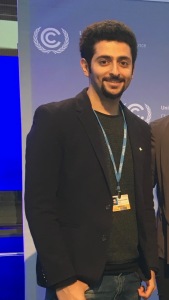Successful implementation of REDD+ depends on sufficient finance. Speakers in this event explored REDD+ finance flows from donor to recipient countries, identifying where they do and do not go, analyzing what this means for the progress of REDD+, and drawing conclusions for further action.
This event organized by the Center for International Forestry Research (CIFOR), the CGIAR Research Program on Forests, Trees and Agroforestry (FTA), the World Agroforestry Centre (ICRAF) and Wageningen University.
First speaker was Robert Nasi, the Director General of CIFOR. He explained how in year 2015, 20 billion dollars invested in stopping deforestation. However, $750 billion was invested in activities which are promoted deforestation. So we do have a problem somewhere! He continued with the CGIAR Research Program on Forests, Trees and Agroforestry. Livelihoods, Landscapes and Governance (FTA) is a world-leading research initiative, responding to the call for urgent, strong and sustained effort focused on forest management and governance, given the crucial role of forests in confronting some of the most important challenges of our time: climate change, poverty, and food security.
Christopher Martius from CIFOR, went into detail on the REEDFIT project which is a study of how readiness benchmark can be linked to REDD+ finance to improve the impacts of available funding. He then gave an overview of REDD+ funding from 2008- 2015, diving the funds into direct and indirect funding groups. Direct funding is defined as everything that is directly related to REDD+ and indirect funding is somehow related to deforestation and supporting forest management and forest governance as well. Most of the funding is from indirect funding and much less from direct funding. So, most of the money is not making it to the REDD+ programs!
The next speaker was Peter Minang, presenting on performance-based finance in forestry and agroforestry. Tefera Mengistu from Ministry of Environment and climate Ethiopia followed with a presentation on the main branches of funding for forestry-based projects in Ethiopia and highlighted the challenges, putting the emphasis on a lack of sufficient finance.
The presentations continued with Asger Olesen, from Climate finance projects. He presented REED+ from different perspective – the donors.

In conclusion, my view is that the amount of funding in REDD+ is not a problem, what they do with the money and where it goes are more important. If you millions of dollars for the project but without proper structure to observe this money, it would be really backfire!
You may also watch the live stream of meeting from the link below:

Mohammad is a PhD student at Istanbul University. His main interests are social forestry, climate change and regulations.
